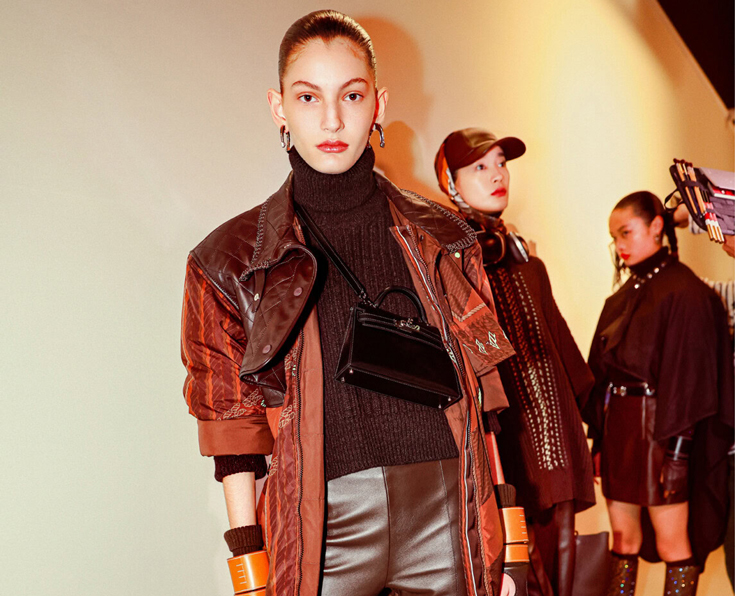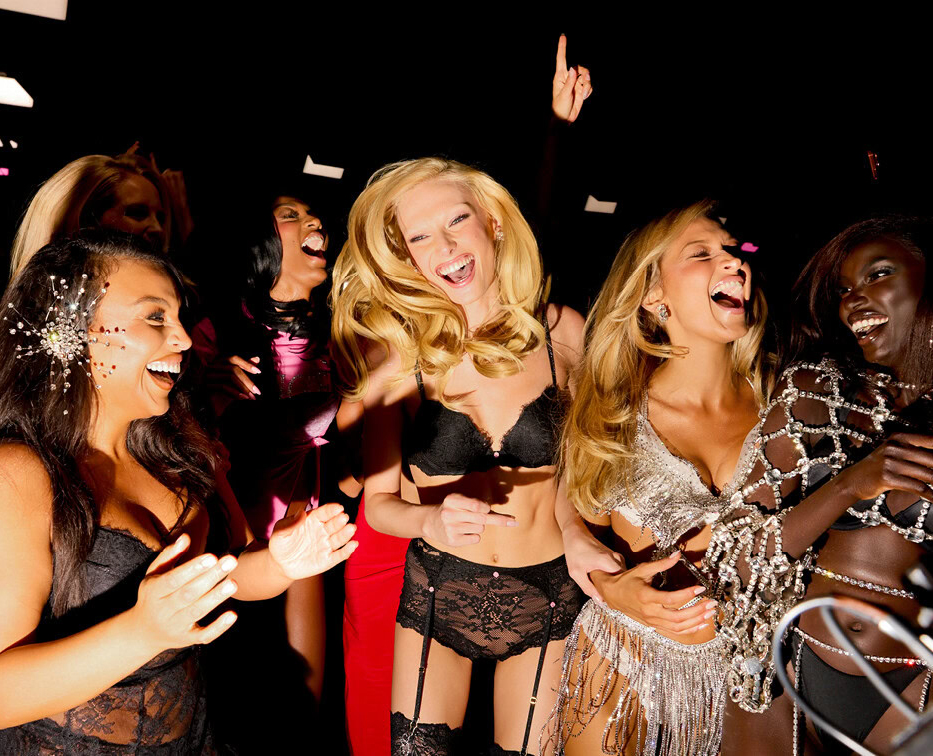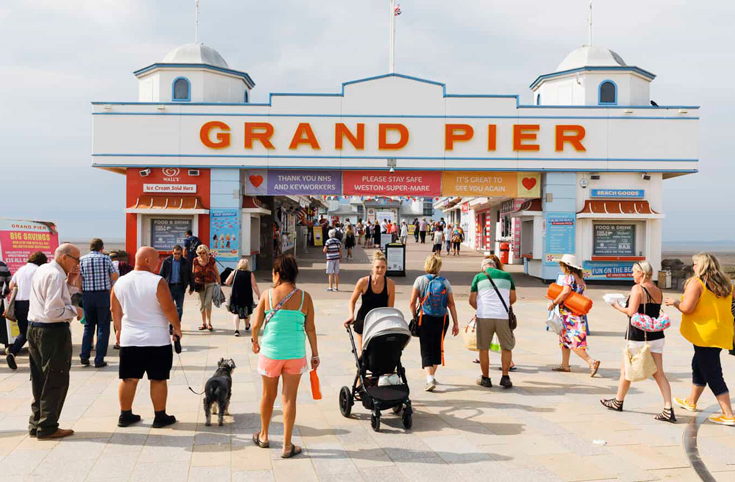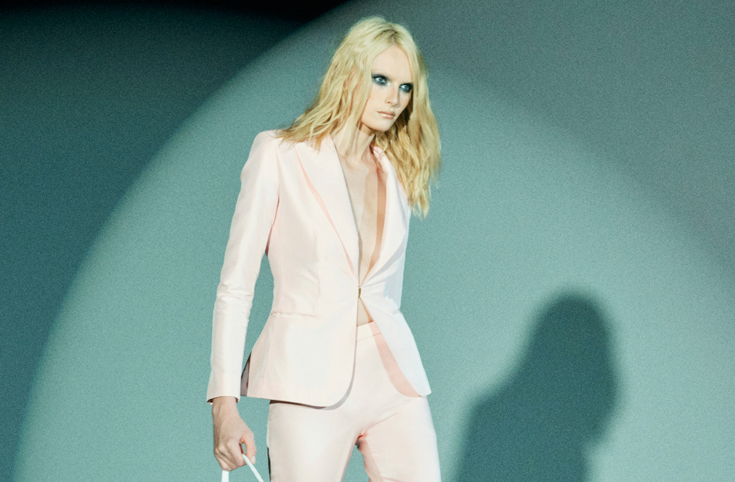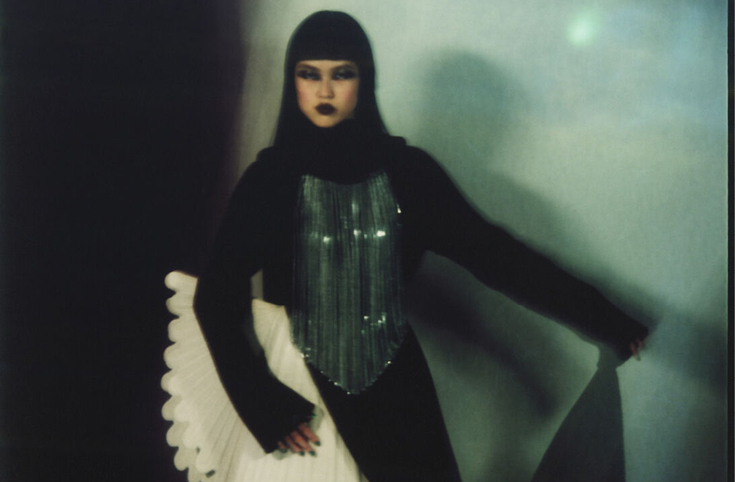REMEMBERING VIRGIL ABLOH

From the issue, Anders Christian Madsen remembers Virgil Abloh's final show:
SATURDAY, NOVEMBER 27 2021
Text from Virgil Abloh: “Reads perfect. Let’s run it.” For the past few weeks, we’ve been working on the press material for his Louis Vuitton spring/summer 2022 ‘spin-off’ show in Miami. A few days away from the show, I’m sending him passages to approve.
The words are his own, I’m just the literary curator. Since he joined Louis Vuitton in the spring of 2018, it’s been like this. Back then, it started with a phone call: “Hey, I have an idea…” Three years on, his calls start the exact same way. Over the seasons, we’ve recorded every conversation and filmed every day we spent in the studio. We talk about everything from the meaning of a T-shirt to the state of humanity. Then, we document it, in mile-long show notes encompassing vocabularies and essays, musicology and cartoons. To me, our conversations are mind-expanding. I’ve never met anyone like him. “I’ll be in Miami btw,” I text him, realising I haven’t told him. “Oh, and I’m writing a feature on the show for 10 mag.” Text from Virgil: “Wowowowow.” Our work continues into the evening, WhatsApp groups are going, final illustrations and layouts for Miami are sent for approval. His final response: “I love this.”

SUNDAY, NOVEMBER 28
I pack a suitcase of colourful shirts for Miami. I look at my phone whenever it vibrates. Virgil usually asks me to amplify the notes as the show approaches. “Hey, let’s add an essay on this…” For his Louis Vuitton show in Tokyo in September 2020, we did some 90 pages. In the wake of Black Lives Matter, he had a lot on his mind. It was the summer of lockdown: he was in Chicago, I was in Denmark, so we turned to Zoom. Those were some of the most important conversations of my life. As the most influential Black man in fashion, he understood his impact. That summer, his manifesto took shape, each word derived from hours of recordings in which he’d reflect upon his position, how he got there, why he got there and the communities that nurtured him. “I am well aware of my responsibilities. Rather than preaching about it, I hope to lead by example and unlock the door for future generations,” he said. “This is my invitation to move forward together with awareness, hope and determination.” Those words, and many others, echo in my head this Sunday afternoon when I receive the message I’ve been dreading most.

MONDAY, NOVEMBER 29
When somebody you love dies, the morning after is the worst. Those seconds when you wake up, just before what happened the day before hits you, make you relive it all over again. It’s 6am. Trying to decide how to proceed, I ask myself a question I’ve often asked myself when I was working on projects for Louis Vuitton: “What would Virgil do?” To me, the answer is simple: he’d want us to go on, get out, get on a plane, go to a show. I repack my suitcase with all-black looks. In the evening, we go to the Fashion Awards in London where Virgil’s face emerges on big screens and speakers pay tribute. I keep getting déjà vu to 2016 when he and I were on the same table: his running commentary track about what was unfolding on stage, his timely sarcasm, his cheeky eye-rolls. That night, someone told us off for chatting too much. “Long-windedness…” he once texted me. “A blessing and a curse.” Often, I’d throw terms at him and he’d come back with something hilarious or thought-provoking and unexpected for me to log in the constantly updated The Vocabulary According to Virgil Abloh that we published as part of the seasonal show notes.

TUESDAY, NOVEMBER 30
“I’m really sorry about those missing headphones,” a concerned-looking stewardess tells me. “Don’t worry, I’m not crying about the headphones,” I assure her. As I’ll learn over the next nine hours to Miami, high altitude and crippling sorrow aren’t the best cocktail. Thank God for in-flight internet. Virgil always said he’d never get on a plane that didn’t have wifi. I touch down an hour and a half before showtime and spend the vast majority of it palpitating in a passport queue. Crossing the bridge to Virginia Key, I finally see Virgil’s red hot-air balloon on the horizon, hovering over the Miami Marine Stadium. “Notes on childlike imagination of flying,” he had told me weeks before, when I asked him what he wanted to write for the spin-off show. A repeat of the SS22 collection he had captured on film in June with an added 10 looks, he had reframed it for a live runway in Miami with so many of the elements that defined his work at Louis Vuitton. Next to the runway, he had erected a massive statue of himself gazing at that hot-air balloon.

WEDNESDAY, DECEMBER 1
Last night was a haze of tears and hugs and loud music. The show soundtrack started with Virgil’s voice: “I’ve been on this focus in terms of my art and creativity of getting adults to behave like children again. That they go back into this sense of wonderment, they start to stop using their mind and start using their imagination.” After the show, when the fireworks were over, we stood there in silence for what felt like forever. It was heartbreaking but beautiful, and entirely in his spirit. Virgil embraced the emotional aspects of fashion. At the core of his ethos was a genuine desire to change the world and he approached that dream with real pragmatism. “The world is so in turmoil that the only way to break out of it isn’t through rational means,” he told me in June 2020. “We need a collective hypnosis, from top to bottom: rich to poor, politician to common person.” Since rational means never seemed to make the world a better place, Virgil wanted to try the opposite. He wanted to imagine he could fly.

THURSDAY, DECEMBER 2
Day three in Miami and my morning is spent scrolling through runway images from the show and my never-ending WhatsApp threads with Virgil. He was always on point but now, every idea he had, every word he said and every look he designed seem loaded with even more significance. “I want people to dream and step inside a fantasy world,” he told me. He knew it was irrational thinking but, he said, “If you can find a parallel that trips your brain into not judging a book by its cover, that’s good.” That’s what the Miami collection was about: mixing the dress codes tied to social preconceptions, like the suit and the tracksuit, or certain cultural motifs and styling. “Is a man in tailoring trustworthy? Is a man in ‘streetwear’ less trustworthy? Does a man who wears a suit by day, rave in a tracksuit by night?” We asked his audience these questions in the show notes. Virgil wanted to liberate our minds from the prejudice society teaches us growing up by reconnecting with the open-mindedness we were all born with. He wanted people to stop treating each other according to how they look, or where they grew up, or what their job is.

FRIDAY, DECEMBER 3
Landing back in London, Miami feels surreal. That had partly been the intention with the show, but we couldn’t have foreseen to what extent. The symbols Virgil used in it – paper planes, balloons – were key to what he called his “boyhood ideology”: childhood objects loaded with ideas of possibility, opportunity and hope. “Limitations,” he once wrote to me, “are man-made.” He didn’t believe in impossibility. For that reason, his show sets, films and the motifs he employed in his collections were often founded in surrealism. On the way home, a percussive spoken-word piece by cosmic jazz composer Sun Ra keeps playing in my head. After a particularly mind- expanding Zoom call in the summer of 2020 where we’d gone deep into trippy enlightenment philosophy, Virgil asked me to listen to I’ll Wait For You from Ra’s album Strange Worlds in My Mind: “Where human feet have never trod, where human eyes have never seen, I’ll build a world of abstract dreams, and wait for you.”

MONDAY, DECEMBER 6
I went to Paris over the weekend. Being with Virgil’s team at Louis Vuitton – where we spent all our time together – feels right. We gather in the studio and stream his memorial service live from Chicago. Afterwards, we toast him and listen to loud rap music, the way he would have wanted us to. Being in the studio where his new collection was coming to life under his direction just a week ago gives new meaning to the words “Virgil was here”. The phrase, which later became the title of the Miami show, was something he used to write on objects and fashion goods. Like his 90-page show notes, it was part of Virgil’s obsession with posterity. We often talked about how the arts and cultures of the African diaspora had been forsaken by the history books, and he wanted to change that for the future. Documenting his own work and existence wasn’t about him, but about the references he used, so many of which celebrated the breadth of Black cultures and histories. “Virgil was here” was a way of making that point. Now, more than ever, I understand his reasons why.
Taken from Issue 19 of 10 Men Australia – FUTURE, BALANCE, HEALING.
LOUIS VUITTON: VIRGIL WAS HERE
Photographer JENNY BROUGH
Fashion Editor JEAN-PHILIPPE PHINE N’DJOLI
Text ANDERS CHRISTIAN MADSEN
Hair PAL BERDAHL using Dyson Hair
Make-up ATHENA PAGINTON at Future Rep using Fenty Skin and KVD Beauty
Models ETHAN PAYNE at IMG, EVANS ESONWUNE at MiLK Management, MOHAMED HASSAN at The Troopers,
KIRAN at Premier Model Management, WANG XIANGGUO at Storm Management,
GOI MANASE at PRM Agency and AYO at Rare Agency Africa
Nail Technician EDYTA BETKA at Of Substance using CND
Set Designer SEAN THOMSON at Magnet
Photographer’s assistant DARREN TSANG
Lighting assistants ADAM ROBERTS and JOSHUA HIPPOLYTE
Fashion assistants FRANKIE REFFELL and FARAI BRODERSEN
Hair assistant MYUJI SATO
Retouching EURSA MAJOR
Digital Operator HO HAI TRAN

